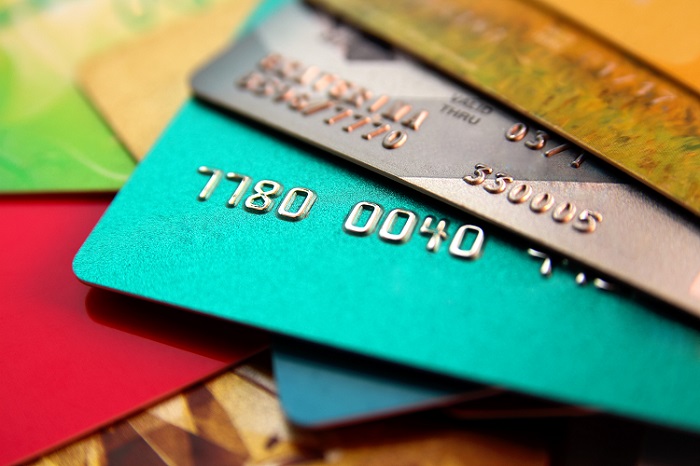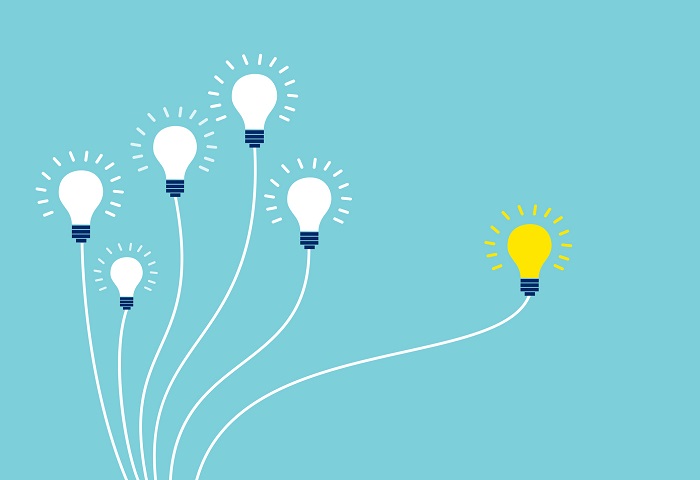From qualifying to costs, the process of legal debt solutions such as personal bankruptcy are often unknown to or misunderstood by consumers, usually to the detriment of those dealing with a debt problem and trying to find a way out of debt.
Every year thousands of people across BC work with a Licensed Insolvency Trustee to get formal debt forgiveness through filing Consumer Proposals or declaring personal bankruptcy. If you have concerns about managing your debt payments or your debts are becoming a challenge, here are some key facts you should know about personal bankruptcy in BC. As we often say at Sands & Associates, “Knowing is not owing!”
Bankruptcy Eligibility and Assistance in Canada
Most bankruptcies are considered voluntary, meaning the person filing seeks out relief and debt forgiveness through bankruptcy. Unfortunately many people face unnecessary delays getting debt help, prolonging their financial stress and difficulties because they are unsure as to whether they qualify for bankruptcy assistance. In reality bankruptcy is an accessible legal remedy should you find yourself in a position where you are unable to repay your debts.
The first step in getting debt relief through Consumer Proposal debt consolidation or personal bankruptcy is to connect with a Licensed Insolvency Trustee for a free confidential debt consultation.
-
$1,000 is the Minimum Amount of Debt Needed to Declare Bankruptcy
In Canada bankruptcy eligibility is very simple: You must owe $1,000 or more and be “insolvent”, meaning you are not able to repay all your debts.
- A $1,000 qualifier leaves a low barrier for consumers who need to access legal debt solutions, although it is uncommon for someone owing less than $5,000 to declare bankruptcy.
- Each person’s situation is unique, a $5,000 debt load can be just as unmanageable as a $75,000 one.
There is no need for you to be facing a stressful situation such as creditor harassment or even having a low credit score to file bankruptcy. Research has shown that most people who file bankruptcy have never actually missed a payment, and as many as 70% have a strong credit score.
-
You Don’t Need Permission from Your Creditors to File for Bankruptcy
Your creditors cannot stop you from seeking the protection and financial fresh start of personal bankruptcy. Not only do you not need to obtain permission from your creditors to start bankruptcy, but there is also no need to make a court application as part of the personal bankruptcy process.
-
A Licensed Insolvency Trustee is Needed to Administer Your Personal Bankruptcy
In Canada, Licensed Insolvency Trustees are the only professionals designated and authorized to help you through the administration of a bankruptcy. You do not need to hire a lawyer, nor can you ‘represent yourself’. The first step in declaring bankruptcy is to find a Licensed Insolvency Trustee in your province.
- Once you’ve connected with a Trustee and decided to move forward with bankruptcy you will work with them throughout the entire process; they’ll be there to help guide you.
- You might also work with an Insolvency Estate Manager – this is a debt help professional who is accredited to provide key debt management services alongside your Trustee.
- During the process you’ll also connect with a Qualified Insolvency Counsellor – these professionals are special financial/credit counsellors accredited by the Canadian Association of Insolvency and Restructuring Professionals.
What is a Licensed Insolvency Trustee? Learn More
Debt Forgiveness and Asset Protection – Advantages of Filing Bankruptcy
-
Bankruptcy Can Forgive Many Types of Debt
When you file bankruptcy you are choosing a powerful debt solution that can eliminate virtually all your debts. Most debts are dischargeable (forgiven) through a bankruptcy, although there are some exceptions which include: court-imposed fines, alimony and maintenance payments, money owing for things stolen and property obtained through false pretenses.
Many debts people assume bankruptcy doesn’t cover can in fact be forgiven, such as:
- General consumer and business debts (credit cards, lines of credit, overdrafts, payday loans, etc.)
- Secured debts – should you choose to end the commitment (vehicle shortfall, mortgage foreclosure)
- Debt for a business for which you have signed a personal guarantee
- Debt owing to another person
- Tax debts with Canada Revenue Agency (income taxes, GST, business taxes, etc.)
- Student loans (federal, provincial and private)
- Outstanding MSP premiums
- ICBC debts
- Debt due to gambling
Write-Off Debt Without Declaring Bankruptcy – Learn About Consumer Proposals
-
Bankruptcy Will Automatically Stop Creditor Contact
Although you don’t need to be behind on your debt payments to access bankruptcy services, if you are experiencing collection actions such as harassing phone calls or even wage garnishment, filing bankruptcy will halt this (or in fact prevent it before it starts).
Declaring personal bankruptcy creates what is called a ‘stay of proceedings’ which means that, by law, your creditors will be barred from contacting you for payment and all collection actions against you must cease once official bankruptcy documents are filed.
-
You Can Keep Assets if You Declare Bankruptcy
There is no bankruptcy rule that requires you to give up all your assets – in fact most people keep all their assets when they declare personal bankruptcy. BC’s Court Order Enforcement Act designates many assets as “exempt” with personal allowances for items including (but not limited to):
- Clothing and medical aids
- Household items
- Work tools
- A vehicle (or vehicle equity)
- Home equity
- RRSPs
- Life insurance policies
- Pension plans
Even if you own something that is not covered under the provincial exemption allowances, this does not necessarily mean that you would be required to surrender it. People often “buy back” the value of the item to their bankruptcy estate, retaining possession of it.
Learn More About Bankruptcy Protection for Assets and Income
Time to Complete Bankruptcy and Impact to Credit History
-
It Usually Takes Less Than a Year to Complete Personal Bankruptcy
When you start bankruptcy you get immediate relief from needing to make further payments on your debt, and once you are released (discharged) from bankruptcy your creditors will officially forgive and write-off those debts.
Many people mistakenly believe this “start to exit” process takes 7 years – but in most bankruptcy cases, you will be granted an automatic discharge/exit from bankruptcy only 9 months after the date your bankruptcy starts, provided that your few required duties have been successfully completed.
-
Filing Bankruptcy Has a Temporary Impact to Your Credit History
Just as you are not permanently in bankruptcy, neither will your credit history permanently carry a bankruptcy notation. Your bankruptcy will be reflected on your credit report for only 6 years from the date you exit (are discharged) and during this time you can still apply for and receive new credit.
- The vast majority who claim bankruptcy move on to get new mortgages, credit cards, vehicle loans, lines of credit etc., if they so choose.
- Many people even build up their credit score faster by starting fresh following a bankruptcy than if they had continued in their previous situation.
- Credit history and scores can change dramatically in just a short period, and part of the bankruptcy process will involve one-on-one financial counselling sessions to help provide you with the tools and resources to move forward with success.
Learn More About Life After Bankruptcy
Privacy and Cost of Filing for Bankruptcy in BC
-
Personal Bankruptcy is Generally Very Private
Bankruptcy in Canada is quite a private process. Usually only your creditors, your Licensed Insolvency Trustee and the Office of the Superintendent of Bankruptcy (“OSB”) will be aware of your bankruptcy.
- Credit bureaus update their records from many sources, including records from the OSB. Much like your credit report, bankruptcy is considered a public record, but in reality the public is highly unlikely to search these databases given that there is a cost and specificity required to do so.
Many people worry their employer will find out about their bankruptcy, but normally the only time your Trustee would connect with an employer would be to direct a payroll manager to stop a wage garnishment previously in place.
If you are feeling the strain or stress of debt, know that you are not alone. Meet some of the people whose lives have been changed working with Sands & Associates.
-
Bankruptcy Has Minimal Cost, with Low “All-Inclusive” Fees
Not only are most bankruptcies quick to complete, but they also have a minimal cost, especially compared to repaying debt with interest. The bankruptcy cost is usually paid by the person declaring bankruptcy – these costs are set and calculated by government tariff (not an hourly fee for service).
In most bankruptcies the direct cost to the person filing is $2,700. At Sands & Associates we often extend an arrangement where you would pay this over the course of your 9-month bankruptcy ($300/month). This would cover everything including:
- The filing fee to register the bankruptcy in Canada
- Costs for two financial counselling sessions done as part of the bankruptcy
- Preparation of and filing related income tax returns
- Ongoing support throughout the bankruptcy process
If you have debt you’re struggling to pay off, are facing a stressful situation with creditors, or just want to get a plan to get out of debt faster, connect with a Licensed Insolvency Trustee today. At Sands & Associates consultations to discuss your situation, explore potential solutions (including bankruptcy and bankruptcy alternatives) are always free, confidential, and without judgment. No referral is required – and you are under no obligation to commit to any process.
We’ll take the time to understand your situation and help you consider all your options – we aim for you to have a transparent and ‘no surprises’ experience so you can feel confident and make an informed decision about how you choose to move forward.
Learn about bankruptcy, debt consolidation and more – book your confidential free debt consultation with Sands & Associates today.






